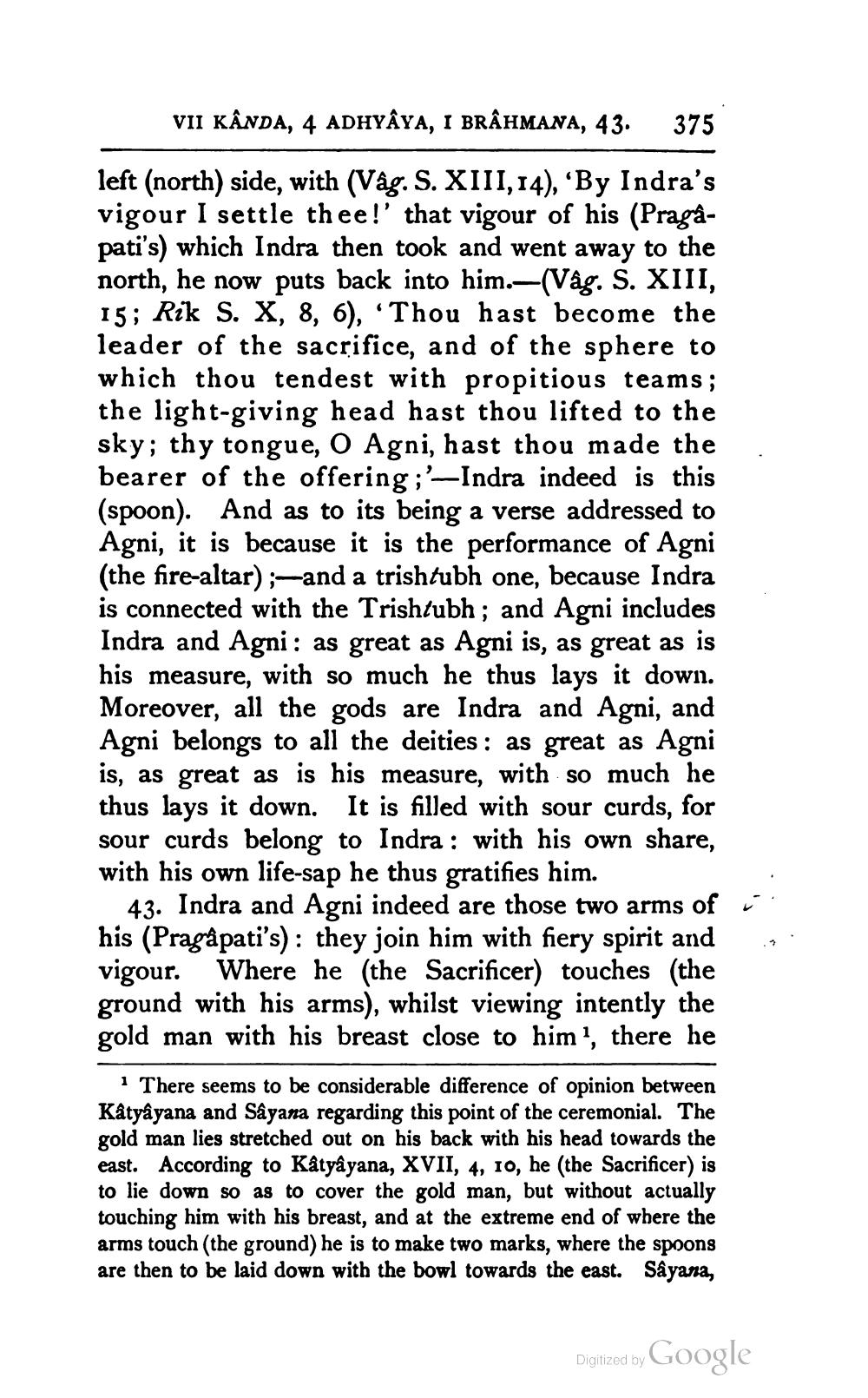________________
VII KÂNDA, 4 ADHYAYA, I BRÂHMANA, 43.
375
left (north) side, with (Vág. S. XIII, 14), “By Indra's vigour I settle thee!' that vigour of his (Pragapati's) which Indra then took and went away to the north, he now puts back into him.-(Vág. S. XIII, 15; Rik S. X, 8, 6), “Thou hast become the leader of the sacrifice, and of the sphere to which thou tendest with propitious teams; the light-giving head hast thou lifted to the sky; thy tongue, O Agni, hast thou made the bearer of the offering;'- Indra indeed is this (spoon). And as to its being a verse addressed to Agni, it is because it is the performance of Agni (the fire-altar);--and a trishtubh one, because Indra is connected with the Trishtubh; and Agni includes Indra and Agni: as great as Agni is, as great as is his measure, with so much he thus lays it down. Moreover, all the gods are Indra and Agni, and Agni belongs to all the deities : as great as Agni is, as great as is his measure, with so much he thus lays it down. It is filled with sour curds, for sour curds belong to Indra : with his own share, with his own life-sap he thus gratifies him.
43. Indra and Agni indeed are those two arms of his (Pragå pati's): they join him with fiery spirit and vigour. Where he (the Sacrificer) touches (the ground with his arms), whilst viewing intently the gold man with his breast close to him, there he
There seems to be considerable difference of opinion between Kåtyâyana and Sâyana regarding this point of the ceremonial. The gold man lies stretched out on his back with his head towards the east. According to Katyâyana, XVII, 4, 10, he (the Sacrificer) is to lie down so as to cover the gold man, but without actually touching him with his breast, and at the extreme end of where the arms touch (the ground) he is to make two marks, where the spoons are then to be laid down with the bowl towards the east. Sâyana,
Digiized by Google




